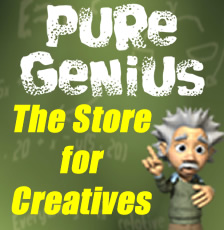Anthem Film Fest: ‘Sick and Sicker’
(First published on blogcritics.org)
Since l was old enough to comprehend such things, sometime in the 1960s, I’ve heard stories of how bad things can be in countries with socialized medicine. Until Saturday, July 13, 2013, at the Anthem Film Festival, I had no idea just how bad it could be. Logan Clements in his documentary Sick and Sicker explores the Canadian health care system and reiterates many of the traditional slams against socialized medicine, but accuses it of new failings I had never considered.
 The scene that most shook my faith in humanity was one where Clements interviews a Canadian health activist. The man explains that about 10 years ago the government began paying universities to graduate fewer doctors. Medical schools received bonuses for reducing the number of graduates. As I watched this, I was totally stumped as to why they would do this. Then it was explained: the Canadian government felt that by having fewer doctors, the cost of the socialized medicine program would decrease. I guess I just don’t know how to think like a bureaucrat.
The scene that most shook my faith in humanity was one where Clements interviews a Canadian health activist. The man explains that about 10 years ago the government began paying universities to graduate fewer doctors. Medical schools received bonuses for reducing the number of graduates. As I watched this, I was totally stumped as to why they would do this. Then it was explained: the Canadian government felt that by having fewer doctors, the cost of the socialized medicine program would decrease. I guess I just don’t know how to think like a bureaucrat.
During the question and answer session, one of the audience members volunteered that she was from Canada. She confirmed the bad service and long waits talked about in the movie. She also brought up another factor: Doctors get worse and less ethical in a socialized system. When a doctor’s reputation is irrelevant, when he doesn’t have to compete for patients, his professionalism can suffer and his dedication to providing good service depends on his personal integrity, divorced from any financial incentives. Many doctors, being human, fail the integrity test.
She also pointed out that the “free healthcare” was anything but free. Up to 40 percent of provincial budgets now go to support the national health system, and this of course is paid for through taxes. Many Canadians will travel to the United States for medical care, effectively paying twice.
Other issues which were raised during the Q&A, were life expectancy and infant mortality. Canadian life expectancy is greater than US. How could their health system be flawed?
Clements had done his homework.
He explained that this was an issue of ethnicity and lifestyle. In the US, the longest living group is people of Japanese ancestry, while African Americans have the shortest. Also, people in Canada are more active and outdoor oriented than we pass-the-remote Americans.
Another audience member raised the issue of infant mortality rate, which is cited as a victory for socialized medicine in Cuba. Clements had also researched this. Many countries, Cuba included, do not record a death as counting toward infant mortality statistics until a child is a certain number of days old. In the U.S., any live-birth can count towards infant mortality statistics. It’s an apples and oranges comparison.
The movie suggests that many of these myths have been propagated by Michael Moore’s film Sicko, which argued that the American system of providing medical care was inferior to Canada’s and other socialized systems. Clements gave an example of Moore’s technique. When Moore went to Canada and interviewed people in emergency room waiting areas, he asked them how long they had been waiting. He used clips of people saying “Oh, fifteen minutes.” He didn’t ask people who had already been seen how long they had to wait before being seen. It is not uncommon in Canadian emergency rooms for waits to be 12 or more hours and sometimes even, literally, days.
Clements uses several very effective documentary techniques in the film.
He alternates scenes of President Obama making speeches praising and making promises about “Obamacare” and scenes of Canadians who are actually experiencing the kind of health care system Obama’s Affordable Care Act would set up.
To illustrate the disconnect between supply and demand, he shows that he is able to rent a wing of a hospital, which is standing empty, to make a short comic film; this while Canadians are on years-long waiting lists for hospital beds. The Canadian government makes many hospital beds unavailable in order to reduce costs.
The absurdity of the socialized system is illustrated by the problem people have in getting MRI’s. One woman is on a waiting list for months to get an MRI. When one of her pets is injured, however, she is able to get an MRI for it the next day, in a hospital which uses its MRI after 5:00 PM for animals. Veterinary medicine is not socialized. You can buy a private medical insurance plan for your pet, but it is illegal to sell medical insurance plans to humans.
Lastly, tragically, the film ends with a tribute to the people who were interviewed during the film, who died before the film was finished.
For more information about Sick and Sicker, check http://www.freestarmedia.com/.



